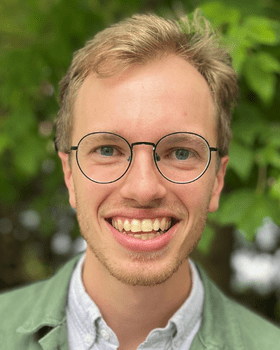Three Questions with Kristin Urbach, Executive Director of the Connecticut Offshore Wind Collaborative

At the beginning of this year, the State of Connecticut launched the Connecticut Wind Collaborative (CWC), a nonprofit organization dedicated to advancing the offshore wind industry in the state. The CWC was conceptualized in Connecticut’s Offshore Wind Strategic Roadmap, published last October. CESA’s Sam Schacht spoke to CWC Executive Director, Kristin Urbach, about how she sees the new organization catalyzing offshore wind development in Connecticut.
CESA: What does the Connecticut Wind Collaborative do?
Kristin: The Connecticut Wind Collaborative was mandated by Governor Lamont as part of the state’s strategic roadmap, so we’re a newly formed organization in the State of Connecticut. Although we were created by the state, we are not part of the state government. We serve as a connector, collaborator, and convener of offshore wind stakeholders involved in each of our four pillars, Workforce Development, Real Estate and Infrastructure, Supply Chain Manufacturing, and Research and Development. I meet often with those leaders in the state to learn more about what they’re currently doing in offshore wind.
Recently, I took a delegation to tour three offshore wind ports in the UK and met with 75 businesses. In addition, we hosted an offshore wind crew transfer vessel (CTV) tour and Heli-service helicopter live demonstration—the first in the nation—at Bridgeport Boatworks in Bridgeport, Connecticut.
It’s really great to have one organization that’s the point of contact for all things offshore wind in the state and to serve as the epicenter, because we have access to all sorts of information from meeting with lots of different partners. For example, in the first two weeks that I was on the job, I met with First Choice Safety Solutions, which provides Society of Professional Rope Access Technicians training. There are only a few SPRAT trainers in New England, one in Rhode Island, and then the one here in Connecticut for First Choice Safety Solutions. I also met that week with the CEO of Survival Systems, who is also a CWC board member. Survival Systems is five miles or so away from First Choice Safety Solutions. Survival Systems has existed for 25 years. I believe First Choice Safety Solutions has been around for 15, and neither knew about each other.
Sam: Why was the Collaborative created in the first place, and what need do you hope to fill in Connecticut’s offshore wind landscape?
Kristin: Before, there were a lot of different entities working on solutions for offshore wind and there wasn’t a cohesive collaborative-type entity. Governor Lamont recognized this and recognized that the CWC should be the go-to place for convening, connecting, and collaboration, not only within Connecticut, but other state partners as well.
The other thing that was important at the time for our board—we have an outstanding board of directors—was that they have somebody who has experience. This industry is fairly new in the United States, and I’ve been in the industry for seven years. Formerly, I was the executive director of the North Kingstown Chamber of Commerce and represented and promoted 400 businesses.
Our partners are anyone and everyone who’s doing work in offshore wind. And it’s great because every time there’s an article that’s published or there’s a video that we publish on LinkedIn or elsewhere, people come out of the woodwork. When I arrived, I was wondering if there were any entities that had CTVs. And within a month, a fellow contacted me and said, “We have four CTVs. We have a fifth that will be released soon.”
CESA: What role do you want to see the Collaborative play in the wider New England region?
Kristin: We’ve been working very closely with Rhode Island and Rhode Island Commerce Corporation. They have an offshore wind head there. For example, our booth, we specifically arranged for our booth to be next to theirs at this past year’s International Partnering Forum. And we meet often to talk about our initiatives. And it’s been a great relationship. We’re not duplicating efforts, but we’re able to share the audience. Everybody will go to Connecticut for this conference and Rhode Island for the next. We’re very supportive of the other states and their work and their activities. The industry doesn’t want to work with silos. They like the fact that we’re working very closely with Rhode Island and some other states.
I’ve also worked closely with the research teams at the University of Rhode Island with the site area mapping plan (SAMP) and designed some workforce training activities around that for the high school students. Most recently, I have connected and met with some of the faculty at the University of Rhode Island and the University of Connecticut. It was really interesting to hear what both entities are working on. They’re different, but they complement each other, and we’re all really excited to see where that will take us down the road. There are a lot of opportunities like that, that we’re connecting the dots and building those initiatives and programs.
Published On
October 16, 2024

